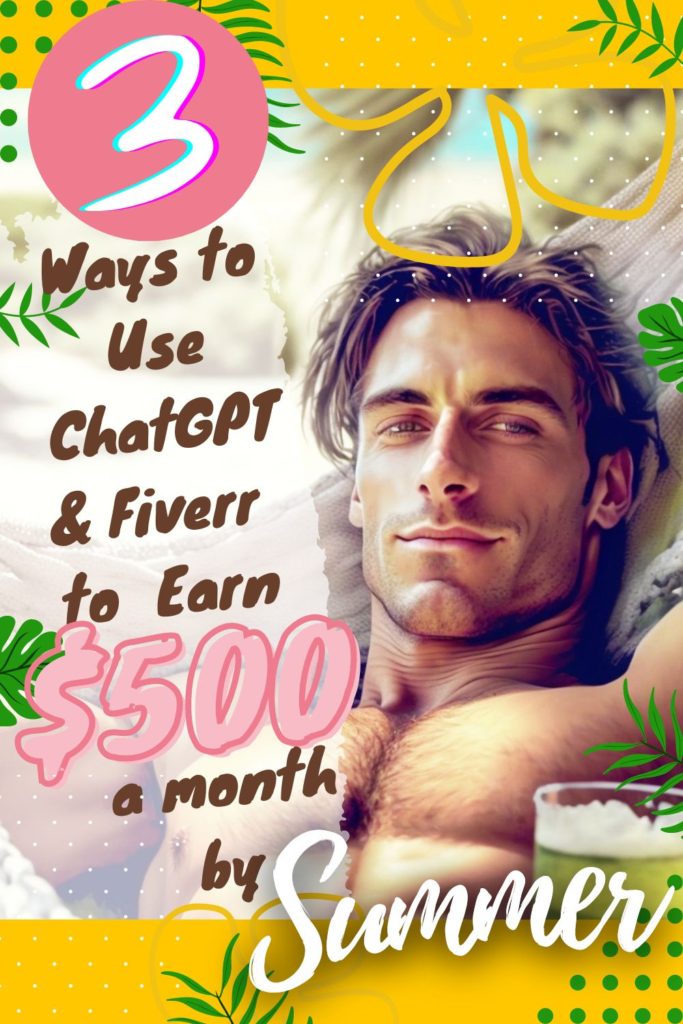Share This!
Hello! Books After Dark Lovers!
You’ve seen those enticing YouTube videos, right? The ones claiming you can rake in thousands of dollars each month by publishing low-content books on Amazon’s KDP platform. Yet, amid the excitement, the comment sections overflow with skeptical voices insisting that the Amazon market is oversaturated and that the era of profiting from simple blank-lined notebooks and journals has long passed. The question looms: Can you truly make money through Amazon KDP publishing, especially when the arena seems overcrowded? Are those charismatic YouTubers just exploiting our curiosity for clicks?
In 2021, I decided to tackle these questions head-on. I embarked on a journey to put Amazon KDP to the test: Can one still generate income by publishing nothing more than a straightforward notebook? Have the masses squandered the opportunity? Are the promises of easy wealth mere illusions?
So, what’s the verdict? In my first month, armed with two simple blank-lined notebooks, I achieved $95.84 in sales on Amazon! But here’s the twist—I had a slight edge, having previously established myself as a self-published Amazon fiction bestseller. However, I deliberately refrained from leveraging this advantage by avoiding talking about my new online money-making venture with family and friends, especially not posting about it or mentioning any projects on social media or in emails. I started from absolute scratch, with no reviews or advertising. This leads us to the central question: How did I manage it? What set me apart in a space where countless individuals yield minimal to no sales with their own blank-lined notebook creations?
The Secret Sauce! Publisher Rocket
Now that we’re venturing into the heart of my approach and what I executed, there’s a vital insider secret I’m thrilled to unveil—no, it’s not about Book Bolt; that’s a conversation we’ll reserve for later. This secret is wielded by those of us committed to reaping the rewards from Amazon KDP, whether as fiction and nonfiction authors or low-content publishers. Many of us have a clear vision of the blank-lined notebooks we wish to introduce to Amazon’s marketplace. We might even take a preliminary step by perusing Amazon and keying in keywords to observe the array of blank-lined notebooks offered. You might search for the word “Notebooks” under the books category and be greeted with an array of bestsellers, all crafted by independent Amazon publishers like you. You see notebook covers adorned with unicorns, smiley faces, dinosaurs, spaceships, and an entire menagerie of designs—each seemingly unique and captivating.
But here’s where prudence intervenes. Before you plunge headfirst into the alluring world of Kawaii Cats or dancing butterflies gracing your notebook covers, let me introduce you to a tool that’s a gamer changer on your Amazon KDP journey to thousands of sales a month—KDP Rocket, or by its newer name, Publisher Rocket! You might wonder why I still refer to it by its original name; it’s simple because I’ve been using it for a long time. This keyword research tool can potentially revolutionize your publishing game, whether your creation lies in the realm of fiction, nonfiction, or low-content.
Discovering the Magic of Publisher Rocket
Picture this: You’ve got your mind set on crafting a notebook cover that captures those adorable and sometimes comical Kawaii Cats! You’re poised to invest valuable time, energy, and possibly some cash to bring your notebook vision to life. But here’s the catch—before you become enchanted by the allure of cute designs, Publisher Rocket steps in as your compass. This tool unveils what people are truly seeking when they type in “Kawaii Cats” on Amazon. By conducting a Keyword search within Publisher Rocket, you’ll uncover an array of keywords linked to your book’s or product’s theme.
Consider this scenario: You input “Kawaii Cats,” and Publisher Rocket presents you with a treasure trove of related keywords that actual Amazon users are typing into Amazon like, “Kawaii Cats coloring book,” “Kawaii Cat stickers,” “Kawaii Cats college-ruled journal,” and a plethora of other variations. Each keyword holds a unique promise, a potential doorway to eager readers or buyers. Are Amazon users searching for “Kawaii Cat notebooks” in droves? Is there a demand? Or will you join the chorus of YouTube viewers in the comment section proclaiming that Amazon KDP is dead due to a lack of prior personal research?
The Jewel in the Crown: Insights and Data
Here’s the beauty—Publisher Rocket isn’t just about providing keywords. It’s about equipping you with valuable information that serves as your North Star during the decision-making process before you download a single cute Kawaii cat from Creative Fabrica or commission that designer from Fiverr.
Besides the list of keywords searched by Amazon customers, Publisher Rocket provides:
- The average prices.
- Monthly average earnings.
- Estimated monthly searches.
- A competitive score.
Demystifying Competition and Demand
In this scenario, you initially had your heart set on crafting a blank-lined notebook adorned with an adorable “Kawaii Cat” cover. Yet, as you input this idea into the Publisher Rocket keyword search, a surprising revelation emerges: the keyword phrase customers on Amazon are actively searching for is “composition notebook Kawaii cats wide-ruled lined pages.” This phrase holds a competitive score of 45 out of 100, signifying a moderate level of competition, alongside data indicating that it garners less than 100 monthly searches. With this newfound insight, the prospects for generating sales from your envisioned Kawaii Cats notebook seem dim.
However, a glimmer of hope emerges from an alternate keyword that appears in the keyword search results: “Kawaii Cat coloring book.” This keyword boasts around 708 monthly searches and a 38 out of 100 competitive score, indicating lower competition. When paired with an average price of $9 per book, the projected average monthly earnings stand at approximately $680. The data suggests that while your dream of a Kawaii cat notebook empire might face challenges, shifting your focus to a Kawaii cat coloring book empire could offer a stronger chance of achieving sales success.
Book Bolt vs. Publisher Rocket: Making an Informed Choice
Before we proceed to the pivotal final step that played a key role in my success—a step that can truly distinguish you from the competition and elevate the sales potential of your book for FREE—let’s engage in a brief discussion about the choice between Book Bolt and Publisher Rocket. As we navigate this decision-making terrain, I’m here to offer a pro tip that could save you not only valuable time but also prevent you from squandering a significant amount of money.
The question often arises—what’s the cost of Publisher Rocket? Publisher Rocket is available for a one-time fee of $97. This singular investment opens the door to a transformative tool that holds the potential to reshape your journey in self-publishing on Amazon’s KDP platform, taking you from a beginner to an expert in understanding the intricacies of Amazon KDP self-publishing, keywords, and sales strategies.
Now, let’s compare to platforms like Book Bolt, which offer similar keyword tools. However, these platforms operate on a monthly subscription basis. I want to make it clear—I’m not dismissing the subscription model; it can be highly effective, especially for those diving headfirst into the realm of publishing. But let’s embark on a visualization together.
In the journey of publishing, paths aren’t always linear. They encompass a mix of experimentation, attempts, hurdles, and eventual breakthroughs. Now, imagine this—should you decide to take a breather, as I did numerous times in my early days, to reassess your approach, recalibrate your strategy, or simply take a much-needed break, the monthly subscription costs associated with platforms like Book Bolt can accrue over time. Even during moments of pause, those subscription fees persist. And this is precisely where Publisher Rocket stands tall, boasting a pricing model that sets it apart.
Empowerment through Ownership
With Publisher Rocket’s one-time cost, you remain firmly in control. Even during those moments of pause, you maintain uninterrupted access to the tool. This means you can refine your skills, conduct in-depth research on Amazon keywords, and prepare for your upcoming publishing ventures without the shadow of ongoing subscription charges. We’re all well aware of how those monthly charges can add up over time. It’s an investment that molds itself around your creative journey—a constant companion that doesn’t impose a ticking clock on your imaginative process.
Publisher Rocket and Book Bolt: A Synergistic Partnership
The question remains—should you favor one tool over the other? Book Bolt’s undeniable value shines brightly, particularly for beginners. At an introductory price of $9.99 monthly for newbies, its desktop publishing tools empower newcomers to effortlessly create low-content books such as journals, diaries, and logbooks. Book Bolt also provides similar keyword research tools to Publisher Rocket, further enhancing its appeal.
While Publisher Rocket may lack the desktop publishing features of Book Bolt, it compensates by excelling in keyword strategies and optimization. This proficiency is invaluable because it enables you to uncover those precious keyword gems that drive both discoverability and sales. As a result, you have a greater chance to stand out from the competition.
This is why I firmly believe in having both tools at your disposal. Together, their value is immeasurable as you embark on your journey into low-content publishing and continue evolving from your first sale to achieving multiple sales milestones. And if you ever decide to take a pause—whether for a much-needed breather or to attend to other matters—you can pause Book Bolt. And thanks to Publisher Rocket’s one-time pricing model, you can retain access to it to refine your knowledge even during breaks.
Final Step: Evaluating the Competitive Landscape "Your Niche" on Amazon... For Free!
So, what’s the last step? It’s something you can do for free! Whether you’re committed to your original idea of crafting a blank-lined Kawaii Cat notebook or considering a shift to capitalize on insights gained from Publisher Rocket about demand, monthly earnings, and competition for the Kawaii Cats coloring book, your final move involves heading to Amazon personally.
This process, which can be done for free, can be performed with or without Publisher Rocket. Go to Amazon.com and input the keywords you intend to use for defining your book into the search box. This is typically the keyword or keyword phrases you would use to title your book on Amazon so that customers know what your book or product is about and so that upon search, they can find your book. Explore the “all departments” and “books” categories during your search. Many low-content publishers recommend that you search using incognito mode for an unbiased view; however, it’s not mandatory.
Pay specific attention to the following:
1) Number of Search Results: Take note of the count of search results displayed for your selected keyword or keyword phrase. Seasoned individuals in the low-content publishing sphere often recommend targeting 1,000 search results or fewer, especially for newcomers to the field. A search result of 1,000 or fewer is a good indicator of low competition. By applying their learned skills, seasoned publishers can have a higher probability of success in more competitive keyword niches.
2) View Recent Releases: Navigate to Amazon’s webpage, and within the left sidebar, under the “New Releases” section, click on “last 30 days.” This allows you to browse recently published books that incorporate your chosen keyword or keyword phrases in their titles.
Scrutinize these books for indicators of success:
a) Reviews: Assess the number of reviews these new releases/books have accumulated.
b) Sales Rank: Analyze the sales rank of these books; lower ranks signify higher sales. For example, a sales rank of #1 is considered very low and excellent, whereas a sales rank of 1 million is significantly higher and not a positive indicator of sales potential.
c) Author’s Track Record: Click on the author’s name to deliberate whether the author is new to the scene, having only 1-3 prior publications, or whether they’ve authored four or more books. An author with over four published books may be building a following that contributes to sales and reviews—this should factor into your decision-making regarding a potentially profitable niche.
3) Check for Ads: Verify if the book is running ads by looking for the term “sponsored” above the title. This indicates Amazon ads for the book.
4) Examine Bestselling Book Covers: Study the covers of bestselling books to gain insight into designs, themes, styles, or colors that thrive in the niche. Use this knowledge as inspiration when designing your book covers.
5) Explore Amazon A+ Content: Visit the product page of these books to determine whether the author employs Amazon A+ Content to enhance their book’s visibility. You can craft your A+ Content using online design tools like Canva or hire freelancers from platforms like Fiverr.
A+ Content offers:
- The opportunity to display more quality images of your book/product.
- The ability to showcase more text and images to communicate your product or brand’s story effectively.
- Increased prominence compared to competitors who do not use this Amazon marketing feature. A+ Content can be accessed on the KDP Kindle Direct Publishing website under the “Marketing” tab.
By initially utilizing Publisher Rocket to identify potentially profitable keywords with appropriate search volume and demand, and then completing this final step—evaluating the competitive landscape on Amazon—you establish a significant advantage over the competition. This comprehensive approach ensures you’re well-informed and primed for success in the realm of low-content publishing.
Are You Putting it to the Test: Scam or Legit?
Did I really earn $95.84 in my first month on Amazon through low-content publishing? It’s time to put the insights you’ve acquired to the test. Is this a scam or legit? You decide.
Curious to Join the Journey?
If you’re intrigued by my journey and findings, prepare for my next blog post. I’ll unveil my top 3 low-content publishing strategies: from $95.84 to $2,489.96 in 4 months—Scam or Legit? Stay tuned to discover how these strategies have shaped my experience and success.
Author
-

Once upon a time, in a land of mystery and darkness, there was a man named Mr. Steve. He wasn't just any ordinary man, though. He founded Books After Dark, a platform for all things dark, mysterious, and self-publishing. Mr. Steve was a man of many talents. He was a contributing writer, graphic designer, and video creator. He had even ventured into the world of self-publishing, selling thousands of his books worldwide. Despite his success, Mr. Steve didn't want to keep all the secrets of self-publishing to himself. He wanted to provide education on self-publishing, affiliate marketing, and other online money-making opportunities. So thus, Books After Dark was born to help other aspiring authors and artists find success in the online world. In recent times, Mr. Steve has even delved into the world of low-content books, and he's excited to share his journey with others on the "Make Money Online with Books After Dark" YouTube channel. While he currently doesn't sell or promote his book titles through Books After Dark, who knows what the future holds? Mr. Steve is always up for a good mystery, and there's no telling what dark and mysterious tale he might come up with next.




